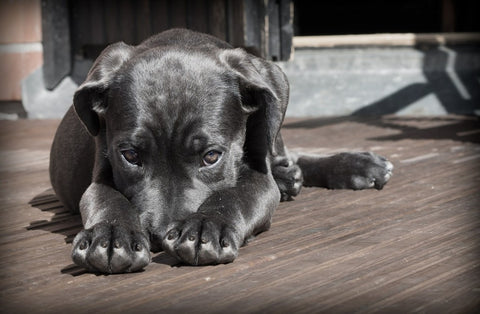How To Crate Train a Puppy

How to Crate Train Your Puppy
Crate training provides your puppy with a safe place to stay while you’re out of the house. This can lower your risk of coming home to find household items or furniture chewed up, especially if your puppy hasn’t mastered obedience training just yet. It can also help you house train your puppy more effectively, since dogs quickly learn not to soil their own crate. In order for this to work, though, your dog will have to learn to get used to being in a crate. Use the following steps on how to crate train a puppy to teach your new fury friend how to be calm and comfortable in this setting.
Preparing for Crate Training
- Choose a suitable crate. There are several materials to choose from, including plastic, fabric and metal, as well as different sizes. Make sure you get a crate that gives your puppy enough space to turn around, but not too much room beyond that. Otherwise, your puppy can end up soiling part of the crate. If your puppy will be growing much bigger, you can temporarily block off part of a larger crate and adjust it as your puppy grows.
- Make the crate comfortable. Your puppy’s crate should be a cozy and comfortable place, so put a blanket on the floor of it.
- Place the crate in a high-traffic area. Puppy separation anxiety can be an issue, especially with younger pups. You can help your puppy adjust to being in a crate by putting it in a part of your home that you and your family tend to use a lot, such as the living room. Having people around can help your puppy feel more at ease inside the crate.
- Remove the crate door. Take off the door to give your puppy a chance to go in and explore. Most puppies have a curious nature and enjoy sniffing out new surroundings. Leaving the door off can encourage your puppy to check out the crate. You might even find your puppy curled up inside it while taking a nap.
Using the Crate
- Introduce your puppy to the crate. If your puppy isn’t showing much interest in the crate, you can make it more enticing by putting a few treats just outside of it. As your puppy moves closer to the crate, put a few more small treats inside the crate. You can also put a few in the back part of the crate to encourage your puppy to go all the way inside. Keep in mind that you might have to try this several times before your puppy will feel comfortable approaching and entering the crate.
- Make the crate part of mealtime. When your puppy is willing to go inside the crate, start serving meals in it. Place your puppy’s bowl of dog food inside the crate to build a positive association between being in the crate and getting something desirable. This makes it easier for your puppy to consider the crate a good place to be, rather than being afraid of it.
- Put the door back on and close it. When your puppy seems comfortable staying inside the crate to eat, put the door on again and try closing it. At first, you should open it once your dog finishes eating. You can then leave the door closed during mealtime for longer and longer periods of time. This helps your puppy get used to being in the crate with the door closed.
- Make crating periods longer. If your puppy stays calm in the crate while eating, you can start making crate time longer. You don’t always have to wait for mealtime to crate train either. Instead, you can encourage your puppy to enter it at any time by offering a treat. Start off by sitting close to the crate for a few minutes, then go to a different room for a few minutes. When you come back, open the crate. Leave your puppy in the crate for longer and longer periods of time while you stay in another room.
- Leave the house. When your puppy can stay calm in the crate for at least a half-hour, start leaving your home while crating. Begin by leaving for a short time, then gradually stay out for longer periods of time. When you’re leaving, do so quietly instead of fussing over your puppy. This will help your puppy stay calm while you’re gone. When you return, greet your puppy calmly rather than making a big deal out of coming home. This can help ease puppy separation anxiety, while going overboard with praise and attention can make it worse. Keep in mind that younger puppies shouldn’t be left in a crate for more than a few hours at a time without having a chance to go potty.
Handling Crate Training Problems With Your Puppy
- Be patient. It’s important to remember that crate training doesn’t happen overnight. It can take several weeks for your puppy to learn how to stay relaxed while being left in a crate. Don’t try to rush the crate training process, or you could end up making problems such as separation anxiety worse.
- Be positive. Being positive is just as important as being patient when you’re crate training your puppy. Your goal is to make sure your puppy associates the crate with pleasant experiences, so avoid yelling or punishing your pet, no matter what happens or how long it’s taking for training to work. If your puppy associates the crate with anything bad, you can count on the entire training process taking even longer.
- Ignore whining. Puppies sometimes whine for attention when they’re in a crate. Rewarding them by giving them the attention they want encourages them to repeat this behavior. Try ignoring your puppy until the whining stops. Your puppy will learn that this behavior won’t result in being let out of the crate or getting attention. If you think whining might mean that your puppy has to go outside, try going out, but make sure there’s no fun or playing involved. Let your puppy go potty, then go right back to crate training.
- Be cautious when dealing with puppy separation anxiety. This is a behavioral issue that needs careful handling to stop it from getting worse. If your puppy becomes destructive when you leave due to anxiety, using a regular dog crate to prevent this from happening might be tempting. Keep in mind that your puppy might get hurt trying to escape from a crate by clawing or chewing at it, though. Work with a professional dog trainer or animal behavior specialist to help your puppy overcome this problem safely.
If your puppy is having trouble staying calm in a crate, ZENCRATE can help. This puppy separation anxiety crate helps soothe dogs while they’re inside it, so they won’t end up hurting themselves.




